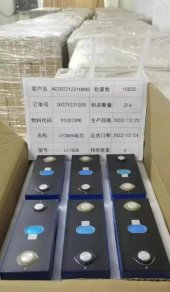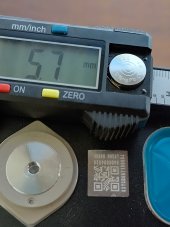peacefulcurrant
New Member
One of the welded studs on my EVE LF304 broke.
My plan is to drill the terminal and tap the hole to use a grub screw instead. My question is though: How deep can I drill into the contact from the contact surface without damaging the cell?
Does anybody have an EVE LF304 cell with drilled contacts that they could measure for me? Or has anybody already done this and remembers how deeply they drilled without issues?
My plan is to drill the terminal and tap the hole to use a grub screw instead. My question is though: How deep can I drill into the contact from the contact surface without damaging the cell?
Does anybody have an EVE LF304 cell with drilled contacts that they could measure for me? Or has anybody already done this and remembers how deeply they drilled without issues?






